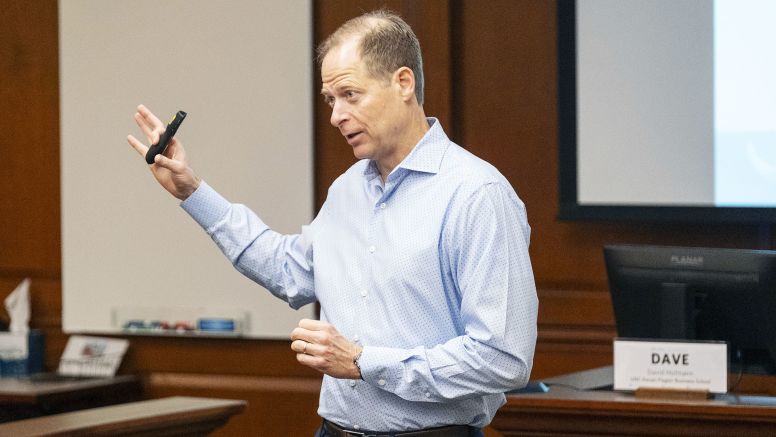News & Stories
Making better decisions

Dave Hofmann knows how companies and organizations can accelerate their decision-making and, ultimately, their success.
Making decisions through well-defined collaborative processes can predict that an organization will find the best solutions to problems and adapt quickly, says Hofmann, McColl Distinguished Professor of Leadership and Organizational Behavior at UNC Kenan-Flagler Business School.
He heard this in his discussions with oil and biotech executives who changed their company by re-framing decision-making processes. He also found that approach confirmed by research on cross-functional teams in 15 Fortune 500 companies published in the International Journal of Operations & Production. Researchers Christina Scott-Young and Danny Samson analyzed work teams on 56 capital projects that invested large amounts of resources to build or maintain company facilities, equipment or infrastructure.
The findings from 252 interviews, he says, show that adapting quickly is important for leaders who want their organizations to be nimble and keep pace with changes in issues, markets and competition. But organizations often get bogged down in a decision-making culture based on opinions, stifled ideas and top-down solutions.
Hofmann has learned that when middle managers collaborate with middle managers in other parts of their organization, they help lower-level employees make decisions faster, with more coordination. “Bringing together people with different perspectives to find solutions pushes decision-making down, allowing organizations to gain speed and coordination,” he says.
“Organizations create this culture where people feel like they must attend meetings with a solution to a problem,” Hofmann says. “That can become problematic when you try to work collaboratively because everybody shows up with their one piece of the jigsaw puzzle and says, ‘Oh, I know exactly what we need to do.’”
Hofmann offers these tips and comments to help organizations switch to a decision-making culture that leverages a work group’s diversity and specialized knowledge to find the best ideas.
For leaders:
- Define a structured process through which you will lead the group so that members’ diverse perspectives can help find the best solution. “Not only identify the right people to bring together, but spend significant time thinking about how to effectively and efficiently lead the group.”
- Be clear on roles, including your role as the leader. “Rather than a decisive, powerful style, leadership here means providing structure and process.”
- Define the problem the group is setting out to solve and tell everyone how they can help. “Prepare them by talking about how each person can speak from their perspective, whether it’s from marketing, operations, finance, human resources, legal or wherever.”
- Avoid asking, “What does everyone think we should do?” “This can lead to situations where people become anchored to a specific perspective and dismissive of other ideas.”
- Facilitate the meeting by asking three to four key questions about the problem and encouraging the group to think about the benefits and risks of different options. “It’s a real talent to be able to be in a room with people and keep them focused.”
For team members:
- Be open to the outcome and ready to listen for others’ unique information, instead of opinions. “Avoid adopting a motive for attending the meeting or building an argument for your solution.”
- Watch out for assumptions and opinions made ahead of time. “People should come in recognizing they have a small piece of the puzzle and therefore can’t really have an opinion about what the answer is going to be.”
- Focus decision-making by discussing all the facts. “People get anchored to an opinion and try to win the argument by doing what’s natural. You accentuate facts and information that help win the argument and you diminish, don’t mention, suppress or explain away facts that don’t help you win the argument.”
- Recognize that your single perspective does not enable you alone to know the answer. “This happens all the time. Everybody has a part of the puzzle. They come in and say, ‘I know exactly what the verdict should be.’”
- Invite others to share their information, or puzzle piece, and to be open to questions. “Recognize that and, if everybody on a team internalizes that, then you create a curiosity mindset that leads to asking questions and also sharing what you know.”